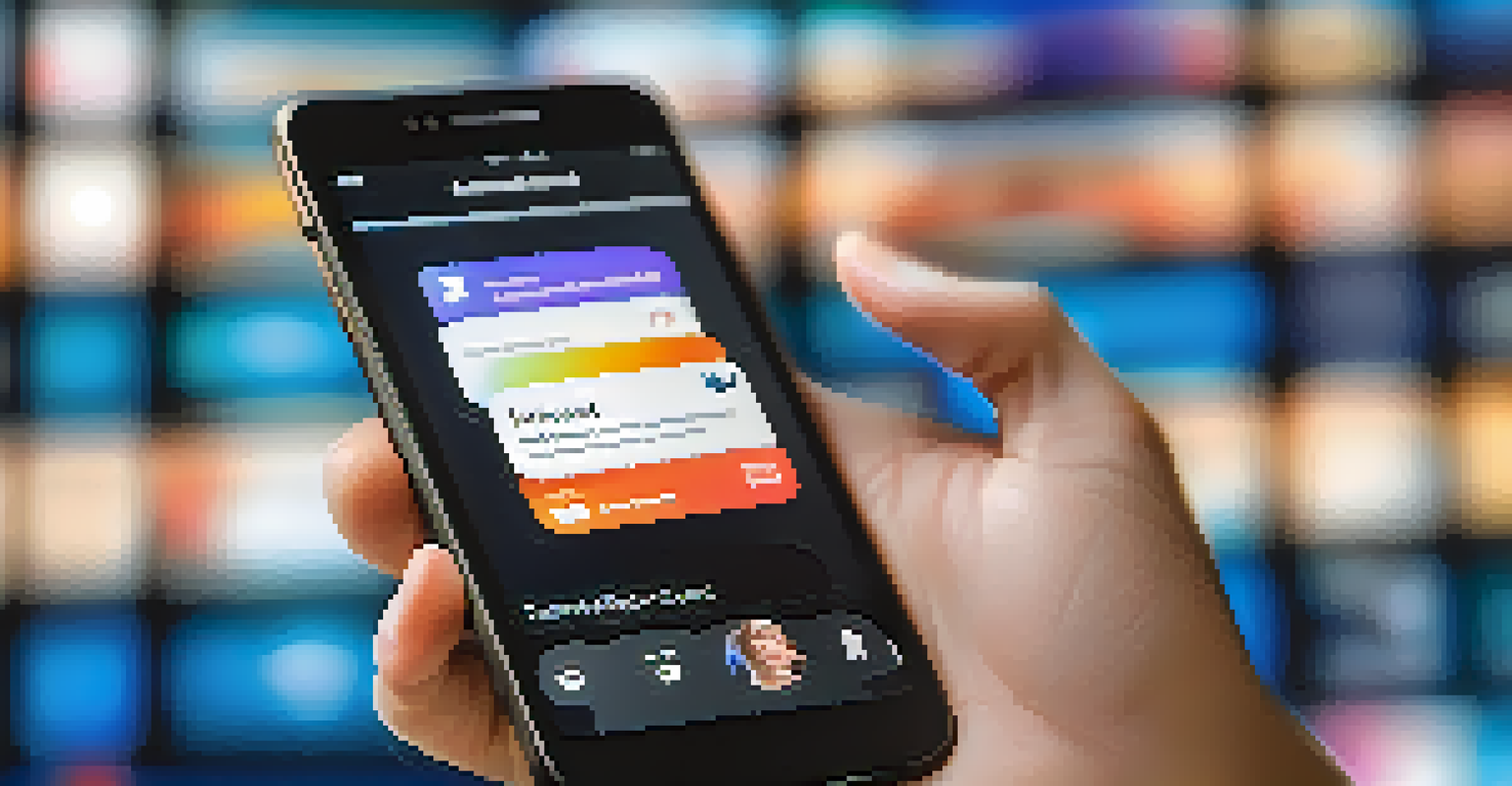Incorporating Social Media in Blended Learning Approaches

Understanding Blended Learning and Its Components
Blended learning combines traditional face-to-face teaching with online instruction. This approach allows for a flexible learning environment, catering to various learning styles and schedules. By merging these two methods, educators can enhance engagement and improve student outcomes.
Education is not the filling of a pail, but the lighting of a fire.
In a blended learning model, students can benefit from both the structure of classroom settings and the convenience of online resources. This dual approach not only fosters independent learning but also encourages collaboration among peers. However, to truly maximize its effectiveness, integrating social media can play a pivotal role.
Social media platforms, like Facebook and Twitter, provide a unique avenue for interaction and community building. When integrated into a blended learning framework, they can enhance communication, facilitate discussions, and encourage peer-to-peer support. This creates a richer learning experience that goes beyond the physical classroom.
The Role of Social Media in Education
Social media has revolutionized how we communicate and share information, making it an invaluable tool in education. Platforms like LinkedIn, Instagram, and TikTok can be leveraged to foster creativity and engagement among students. This shift towards digital communication aligns perfectly with the needs of today’s tech-savvy learners.

By using social media, educators can create groups or forums where students can discuss course material, share resources, and collaborate on projects. This connectivity not only enhances learning but also builds a sense of community. Additionally, social media can provide a platform for students to showcase their work and receive feedback.
Blended Learning Enhances Engagement
Combining traditional teaching with online resources fosters a flexible learning environment that caters to diverse learning styles.
Moreover, social media can serve as a source of real-time information and news. Educators can encourage students to follow industry leaders and educational content creators, helping them stay updated on trends and advancements in their field. This exposure can spark discussions and inspire innovative thinking.
Benefits of Incorporating Social Media
Integrating social media into blended learning approaches offers numerous benefits. Firstly, it promotes active learning by encouraging students to engage with content outside of traditional methods. This can lead to deeper understanding and retention of the material.
The internet is becoming the town square for the global village of tomorrow.
Additionally, social media can help break down barriers between students and instructors. By creating informal channels for communication, students may feel more comfortable asking questions and participating in discussions. This accessibility can lead to a more supportive and collaborative learning environment.
Finally, using social media can help develop essential digital literacy skills. As students navigate various platforms, they learn how to curate information, engage with diverse viewpoints, and collaborate online. These skills are crucial not only in academic settings but also in the professional world.
Choosing the Right Social Media Platforms
Not all social media platforms serve the same purpose in education. It’s important to choose the right ones that align with your learning objectives and the preferences of your students. For example, platforms like Slack or Microsoft Teams facilitate organized discussions and project management, while Instagram can be great for creative assignments.
Consider the demographics and interests of your students when selecting platforms. Younger generations might prefer visual platforms such as TikTok or YouTube, while older students might gravitate towards LinkedIn for professional networking. Tailoring your approach to your audience can significantly enhance engagement.
Social Media Builds Community
Integrating social media in education promotes collaboration and peer support, enhancing communication beyond the classroom.
It’s also crucial to establish guidelines for social media use within the learning environment. Clear expectations can help maintain a respectful and focused atmosphere, allowing students to benefit from the resources available without distractions. Setting these boundaries ensures that the experience remains positive and productive.
Creating Engaging Content for Social Media
Engaging content is key to capturing students' attention on social media. Visuals, such as infographics or short videos, can make complex concepts easier to understand and more enjoyable to consume. When crafting content, consider the interests and preferences of your audience to ensure it resonates.
Encouraging students to create their own content can also enhance learning. Assignments that require students to produce videos, blog posts, or social media campaigns can foster creativity and critical thinking. This approach not only reinforces learning but also allows students to express themselves in unique ways.
Moreover, utilizing polls, quizzes, and live Q&A sessions on social media can increase interaction and feedback. These interactive elements not only make learning fun but also provide valuable insights into students’ understanding and engagement levels. This iterative process can help educators adjust their strategies in real-time.
Addressing Challenges of Social Media in Learning
While there are many advantages to using social media in education, challenges do exist. One major concern is the potential for distraction, as students may gravitate towards non-educational content. Striking the right balance between encouraging exploration and maintaining focus is essential.
Additionally, issues of privacy and security can arise when students engage on social media. Educators must emphasize the importance of protecting personal information and adhering to guidelines for safe online interactions. This education is crucial in fostering responsible digital citizenship.
Measuring Success is Key
Establishing clear metrics and gathering student feedback are essential to evaluate the effectiveness of social media in blended learning.
Finally, not all students may feel comfortable or familiar with social media. Offering alternative methods of communication and engagement can help ensure inclusivity. By providing various options, educators can accommodate different comfort levels while still promoting collaboration and interaction.
Measuring Success in Social Media Integration
To gauge the effectiveness of social media integration in blended learning, it’s important to establish clear metrics. This might include tracking student engagement levels, participation rates, and academic performance. Utilizing tools like surveys and analytics can provide valuable data.
Feedback is another critical component in measuring success. Regularly soliciting input from students regarding their experiences can help educators understand what works and what doesn’t. This information can guide future strategies and adjustments, ensuring continuous improvement.

Finally, celebrating successes and sharing best practices among educators can create a supportive learning community. Highlighting positive outcomes reinforces the benefits of social media in education and encourages others to explore creative approaches in their own teaching.